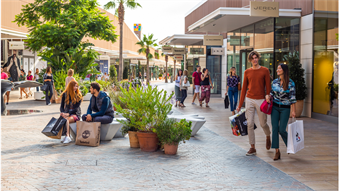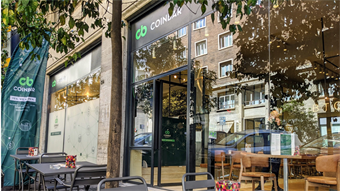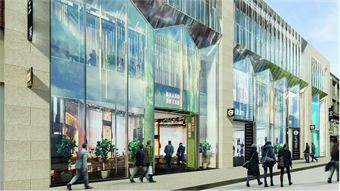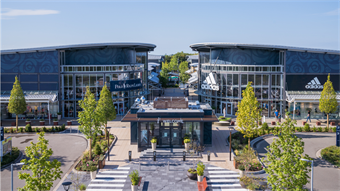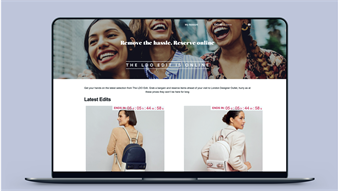Test-bed retail innovation
- In Special report
- 15:44, 04 December 2019
- 5107 Views
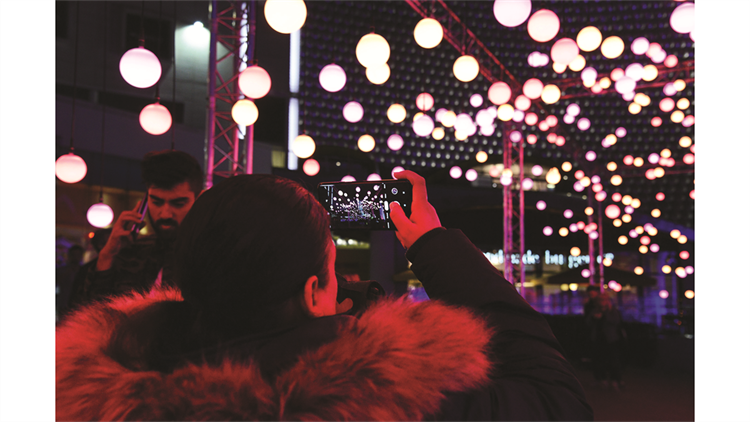
Innovation, innovation, innovation: the important mantra in retail and retail real estate that’s likely to become the guiding principle for the future of physical retail. Those that embrace change and fresh offerings are likely to spark consumers’ retail imaginations and create the brand loyalty so many crave.
On the face of it, the outlook for small, innovative brands in bricks-and-mortar retail can be pretty gloomy. Online shopping, huge brands and dominant supermarkets and discounters – not to mention consumers of course – have all played their part in contributing to the slow and steady demise of local, independent retailers in towns and cities. Rents and lease terms have priced many smaller brands out of physical retail spaces, further accelerating their exodus to e-commerce.
But what if we’re actually starting to witness a simmering revolution in retail? Where more emerging brands, clicksto-bricks, independents across retail, food and beverage and leisure offerings are just what consumers want for those special experiences. And where large brands are even trying to localise their offerings to appeal to local markets. So, is there ample vision and impetus for retail and real estate to make space for fledgling brands alongside national and global offers to create a retail ecosystem that will breathe fresh life into the physical retail experience?
SMALL STARTS, BIG AMBITIONS
Scandinavia is often a test-bed for innovation. AMF Fastigheter is one of Sweden’s largest real estate companies and a wholly owned subsidiary of pension provider AMF. The real estate company is backing long-term trends ‘to try to look into the future and be one step ahead’. Its ambition is focused on innovation and proverbial thinking outside of the box. AMF Fastigheter has the flexibility to offer small brands the opportunity to set up shop at The Lobby in Stockholm.
The 600 m2 (6,460 sq ft) store is home to a smorgasbord of tiny start-ups, national and international brands. They occupy spaces as small as a single shelf to a more sizeable presence for a period of time, then other retailers are given the chance to take part. What’s truly innovative about The Lobby is that it recognises that fledgling brands don’t always have the kind
of cash it can take to have a retail presence. Instead of a leasing contract, the Swedish store bundles everything a start-up would need into a marketing agreement. Typically costing as little as €1,800 a month, a contract could cover the space, fixtures and fittings, staff, plus various tech tie-ups with Deloitte Digital and small tech companies.
The Lobby was part of a Revo study tour to Scandinavia last year, allowing retail and real estate experts to witness how property owners are using space in creative ways to revitalise retail. Neil Hockin, head of the shopping centre leasing team at Lunson Mitchenall, was suitably impressed by what he saw.
‘You can rent a wall, a rack or a plinth for as short or long a period as you want at The Lobby. The idea is especially designed for online brands to give them a physical presence,’ he says.One Singapore sock-maker even found that her products were selling particularly well in Stockholm, so she took space at The Lobby, says Hockin. ‘The great thing from a consumer’s perspective is that each time they visit The Lobby, the look, feel and products are different.’
If more landlords could encourage a tenant mix that sparks repeat consumer footfall, The Lobby’s approach could be an innovation worth replicating. ‘If we could find a way of achieving a commercially viable approach to The Lobby outside of Stockholm that would be brilliant,’ Hockin says. Other large retail property owners are hosting pop-ups, encouraging young brands and trying out ideas to create a buzz around the retail experience, complementing their cornerstone tenants.
UNIQUE AND MEMORABLE OFFERINGS
Kate Orwin, head of portfolio leasing at Hammerson, agrees that consumers increasingly want something unique and memorable when they visit their retail sites. ‘It’s no longer enough to have the same mix of mid-market fashion retailers and F&B chains in your destinations,’ she says. Like many other forward-looking retail property owners, Hammerson is targeting ‘exciting’ independent and local F&B brands, such as pancake operator Stack & Still in Glasgow Silverburn and Kitty Cafe in Grand Central in Birmingham.
‘To put it into context,’ Orwin says, ‘55% of our new UK F&B lettings in 2018 were to independent, local or emerging brands. We’re also bringing in new leisure brands like Treetop Adventure Golf in Highcross, Leicester, and escape room concept Locked in a Room in Westquay, Southampton.’
Property owners play a vital role and have the resources to create an overarching tone of experience, connecting small and large brands that appeal to consumers. ‘Our events create a real buzz at our venues, driving footfall to our destinations,’ she says. ‘For example, during the Festival of Light event at Bullring & Grand Central in Birmingham earlier in the year, footfall rose by 9.8%, and over 30% of visitors were new. That means more consumers visiting the brands in our centres, and from a broader catchment than usual, which can only be a good thing.’ ‘We also partner with brands during these events to make them extra special. At The Maze at Westquay, Southampton, John Lewis & Partners organised a teddy bear’s picnic,
and Laings ran a “find the diamond” competition,’ she explains. ‘These types of activities build awareness among consumers, and drive greater interest in a brand.’
As well as more competitive socialising offerings that enhance retail and F&B offerings, the pop-up phenomenon not only showcases fresh retail brands on the high street and in shopping centres, they’re also a creative way of filling vacancies in new and also challenged spaces. Retail storytelling, in particular, resonates with consumers and helps curate appealing, fresh offerings.
ARE YOU SHOPPING COMFORTABLY?
Shopping centre operator ECE and pop-up specialist Pop Up My Brand (PUMB), part of the Vertikom Group, have created a pop-up concept for the first time in Limbecker Platz shopping centre in Essen, Germany. It’s All About Stories concept curates six to eight brand stories for two months each with their products staged for hands-on experiences. The pilot store in Essen launched with the theme ‘It’s All About Gadgets, Baby!’, focusing on tech products from brands and partners including Mark E (a utility company), Kito (electric scooters), xounts (loudspeaker systems), as well as Hama, Sony, Fitbit, AEG, and Ecovacs – with two food partners rounding out the offering. Upcoming stories will include themes such as family, cozy home, outdoor, sports and fitness, vacation and travel, and sustainable living.
‘We offer the participating brands a simple and flexible platform to present their brands in an interactive way with significant reach and footfall,’ says PUMB general manager Christoph Edler. ‘We can do what digital shopping can’t do – appeal to the senses, allow visitors to test the products, and bring the brands to life.’
TAPPING INTO SENSORY APPEAL
The start-up community is helping independent retailers bridge the gap between physical and online – all part of the ‘phygital’ phenomenon – by innovating with tech offerings that might previously have been the domain of huge, resource-rich brands. Tech start-up Decology is helping furniture and interior shoppers and independent retailers address the age-old
challenge of being able to visualise large-size furniture and domestic accessories in their home. The company’s app creates an advanced 3D render that works on a smartphone that’s connected to an augmented reality visualiser that helps consumers place considered home purchases, such as a sofa or a table, in a digital mock-up of their room (read more in the article on page 13). As pure internet brand plays mature, more of them are expected to be part of the growing clicks-to-bricks trend, especially where their products rely on delivering a sensory or physical interaction for consumers. ‘E-commerce start-ups, such as mattress provider Casper or footwear brand Allbirds, are currently looking to set up physical stores,’ says Faisal Butt, an entrepreneur, investor and founder of seed investment proptech specialist Pi Labs.
‘These disruptors are taking a fresh approach to physical stores by considering how offline and online work together,’ he says. ‘They know that some consumers like to try in store and buy online, while others like to find an item online before stopping by a shop to try it on.’
ENCOURAGING TOMORROW’S TENANTS
Nurturing and investing in start-up brands can clearly support their growth strategies too, helping to create demand for longer-term tenants. ‘We’re also using pop-ups and temporary leases to keep our destinations fresh and vibrant for consumers. Popups allow brands to test new concepts and ideas, and if they work out then they can take a longer-term lease,’ Hammerson’s Orwin explains. ‘This is exactly what happened with The White Company at Westquay in Southampton – they took a pop-up in 2018 and were so pleased with the response that they have now taken permanent space,’ she adds. Shopping can be a hungry business – and destinations like Market Halls in London and Big Mama in Paris are good examples of F&B innovation. ‘What differentiates your offering beyond your cornerstone tenants is the boltons, including interesting catering mixes,’ says Hockin. ‘Food halls are a great way for landlords to give what is a generic shopping environment a more individual feel.’ Retail, F&B and leisure spaces clearly need to appeal to consumer appetite for fun and engaging experiences – and offering unique products that they won’t find in other locations is vital in various urban locations with discerning demographic groups. Locations don’t have to be on the high street or in shopping centres though – as LabTech shows in its innovative market redevelopment in London (see Camden: revamping market trading).
WHAT CONSUMERS WANT
In the start-up and scale-up ecosystems, businesses are nimble and agile – and they are generally in close touch with their customers through always-on tech interactions. This does not mean that large brands are out of touch with the zeitgeist of consumer experience though. Zara famously allows its store managers to merchandise their offering on a hyper-local basis to appeal to local tastes. And Primark is increasingly promoting city brands as much as its own to captivate local sentiment and loyalty in their city centre stores.
However, finding out what consumers want from that ultimate retail experience is the critical question that even some of the most unlikely players are seeking to answer. McKinsey – yes the global consultancy firm – recently opened the doors to a 5,000 sq ft store, previously occupied by Abercrombie & Fitch, at the Mall of America in Minneapolis, in the US.
Test-bed retail innovation is a concept that’s surely relevant to all parts of the retail industry. McKinsey is investing heavily in its venture – showcasing brands including jewellery retailer Kendra Scott, type:A Deodorant, Elevé Cosmetics; and lingerie company ThirdLove – to discover whether technologies like smart mirrors, sizing software and cryptocurrencies appeal to shoppers. ‘Digital technology has driven down high-street sales,’ Pi Labs’ Butt says. ‘It is also what will end up saving it.’ It all goes to show that for any size of retail, when you know what your customers want, you’ll be able to test innovations to see where the winning formula is.


